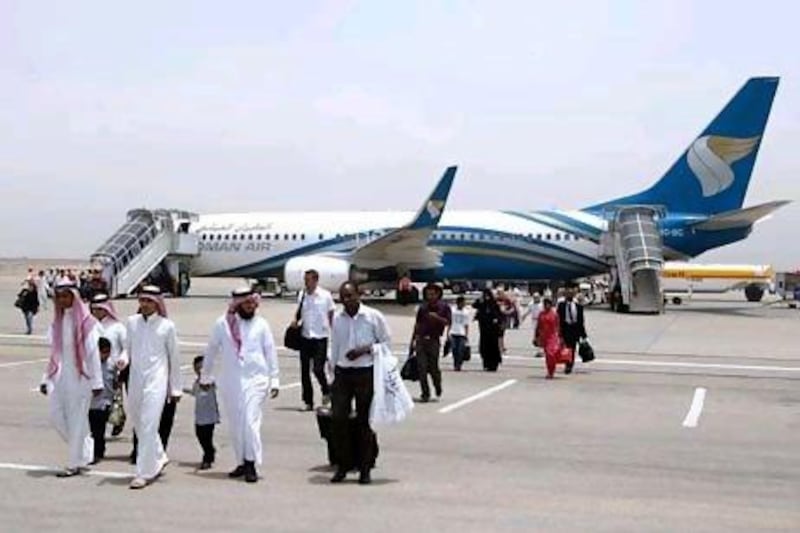One day in late February, Peter Hill, the chief executive of Oman Air, came face to face with the spirit of popular protest sweeping parts of the region.
He was not out in the streets of Egypt or Tunisia, however, but in the parking lot of his own headquarters in Muscat, where 300 members of staff were demanding better working conditions.
Mr Hill immediately stood on an office chair and, speaking through a PA system, calmed the workers and persuaded them to return to their duties. The protests at Oman Air lasted for two months, but work stoppages were avoided and some of the improvements workers had demanded were provided.
"The main point in these situations is that they were concerned about something and you've got to listen," said Mr Hill.
The scene at Oman Air's headquarters is perhaps the most dramatic example of how airlines in the Middle East have been caught up in the region's unrest. Over the past six months, tensions and social upheaval in Tunisia, Egypt, Yemen, Bahrain, Libya and Syria have dragged down demand for air travel and caused significant losses for some of the region's airlines.
"The whole region got tarnished by revolutions, in terms of both tourism and business traffic," said Hussein Dabbas, the chief executive of Royal Jordanian Airlines. "Leisure traffic from Europe and the US basically dried up."
Regional unrest is a factor in the latest profit outlook for Middle Eastern airlines for this year. The International Air Transport Association (IATA) on Monday reduced its estimate of regional airline profit for this year from US$700 million (Dh2.56 billion) to $100m due to reduced demand for air travel as well as high fuel prices.
The disruptions throughout the Middle East and North Africa caused global traffic to fall by 0.9 per cent in March, the association said.
In Egypt, the number of flights in and out of the country is still down by 25 per cent. Hussein Massoud, the chairman and chief executive of Egyptair, said his airline could record a loss of more than $100m for its financial year ending next month.
The carrier recently received new long-haul jets and had planned a major expansion to the US and Canada last month. But it deferred the plans because of a fall-off in its business, including in Europe.
"We are concentrating on tourism between Arab countries," he said. "This is to compensate for the downturn of European travel, but not completely. We have no other choice."
Many airlines were caught in a complex juggling act as they rotated aircraft out of countries in the region affected by unrest and deployed the planes to more stable routes. At different times over the past six months, the Kuwaiti carrier Jazeera Airways has reduced its service to Egypt, Syria and Bahrain, said Stefan Pichler, its chief executive.
Although Jordan was spared major civil strife, its tourism markets suffered, said Mr Dabbas.
"We are bundled up with the wider Middle East," he said. "If anything happens in Syria, for example, it is always a Middle East issue, even though Jordan did not have anything major to report. We are feeling it very much."
In some of the countries affected by social upheaval, a market recovery is under way. Travel to Egypt and Tunisia is rising, said Tim Clark, the president of Emirates Airline. But travel to Syria and Yemen remains depressed. "At the moment we just have to tough it out," he said.
IATA said only half of the 18 per cent fall in African traffic had been restored as of April, the latest month for which data are available. Egypt, Libya and Tunisia account for 21 per cent of the continent's air travel market.
In the Middle East region, the three countries that are still dealing with unrest, Bahrain, Syria and Yemen, account for 6 per cent of regional traffic.
Because of the disruptions, IATA is forecasting slower growth for Middle East carriers this year. Traffic on regional carriers will increase by 14.6 per cent for the year versus 20 per cent last year, IATA said.
The double-digit gain would still be among the strongest worldwide, IATA said.





